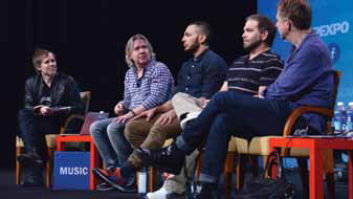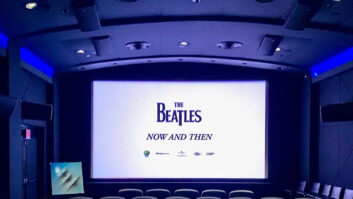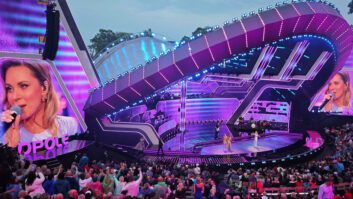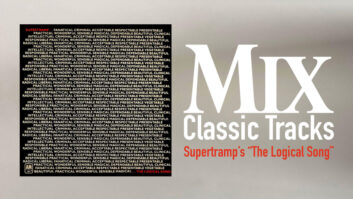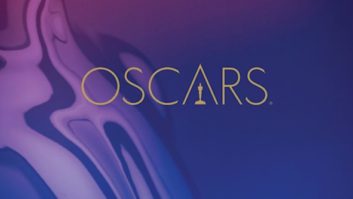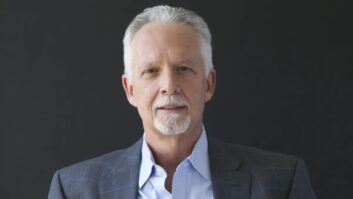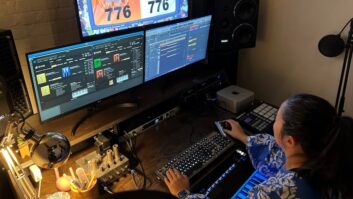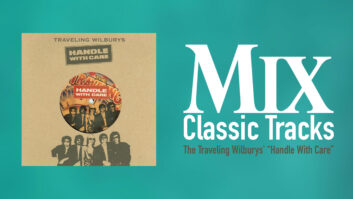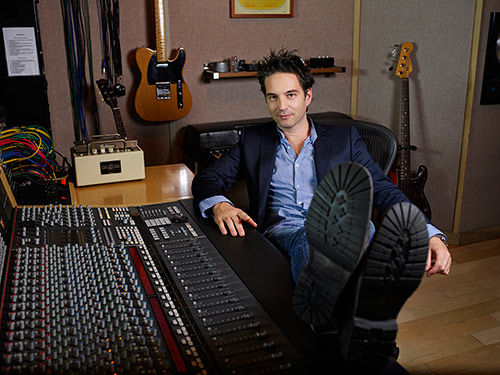
Foregoing college, composer Jeff Russo climbed into a 1963 Chevrolet Corvair after graduating from high school in 1987 and headed to Los Angeles to track down his dream. A couple of friends, including future superstar Lenny Kravitz, shared expenses and time behind the wheel. “I grew up in New York City,” says Russo, “but L.A. had a strong pull on me.”
Try finding cheap space anywhere in Los Angeles today—not likely. But in the late 1980s it was possible for scuffling artists to live and work there. “Three of us—Lenny, my dear friend Aramis, and me—shared a loft. We were cutting our teeth, writing songs, making demos and learning a bit about recording.”
Kravitz moved back to New York when his career began shifting gears. Success took a little longer to find Russo. “The band I was involved with imploded,” he says. “But then I formed Tonic, and things started to happen for us.” The group’s debut album, Lemon Parade, included the Number One single “If You Could Only See,” and in 2003 the band received a pair of Grammy nominations.
The road takes a toll, however, and the members of Tonic eventually found themselves being pulled in separate directions. “We made three or four records, and all of a sudden it was 2006,” Russo recalls. “Fourteen years had passed. Our singer, Emerson, wanted to make a solo record, and we decided to take a break.”

Russo fell into a working relationship with Wendy Melvoin, of Wendy and Lisa. By this time the duo had sailed past their professional connection to Prince and begun writing for television and film. A taste was all it took for Russo to become hooked on the scoring process. “Writing music for visual media became something I loved,” he says. “It seemed so right for me.”
The industry has found an appetite for Russo’s spare and elegant style, as well. Currently scoring the second season of the FX series Fargo, Russo snagged an Emmy nomination for his work on the show’s inaugural campaign. He’s also scoring Power and CSI: Cyber, the newest entry in the CBS franchise.
Russo, who has had a home studio since 2001, moved into a room near the Paramount lot several years ago. “After we had kids it became harder to get things done at home,” he explains. “I fell upon a publishing company’s old writer studio just as they were moving out. The landlord was going to tear out the studio and rent out the office space. I convinced him to leave it alone, and I simply slid in my equipment and wiring.”
Russo recently put an SSL AWS948 console into his room. Why? “Many people ask me that! I’m old school—I like faders, and this console has a rich, super pristine and clear/clean sound,” he says. “I just love the sound of this board! I’m a huge Neve and API fan; all of the big consoles and famous audio architecture is great, and I use little pieces of everything, but what I like most about this particular SSL is that it gives me back what I put into it, and it has lots of volume.
“I could do this gig without having a console,” he continues, “but I have drums and other live instruments in my studio and I’m used to making records with a console, so I’ve transmuted that approach into my work for television. Not to mention the fact that the board looks cool! I just got it last July. Before that I had a Control 24. The SSL, which I bought new, is both a full 48 analog console and a complete Pro Tools interface.
Asked how he would describe his approach to orchestration, Russo responds: “It really changes for every project. Music really can push a story in one direction or another, and I feel that the less of it you use, the more important music becomes. Using music sparingly is a great way to maximize its effectiveness, and that’s how I try to treat a score.
“I’m currently working on Tut for the Spike network,” he continues. “It’s exactly what you’d expect—a very broad, big, epic score. The show features a lot of music, and I’m writing for a 70-piece orchestra; that’s what this show needs. With Fargo, conversely, it’s a barren story, so using music sparingly was effective; you wanted that cold and lonely feeling. Sarah Lynch is my orchestrator, but I perform a lot of the parts directly into my Pro Tools sequencer using sample libraries. I have a lot of the Spitfire and Berlin Strings stuff; they’re mainly what I turn to when I write for the orchestra.”

A number of his larger scores have been recorded overseas, but Russo hasn’t selected a venue for the Tut sessions. “I use my place to record myself on drums, guitars, basses and keyboards, as well as to track soloists—an oboist, say, or a violinist. I have about 400 square feet of space in my live room, plus another 600 square feet or so in the control room. Jim Hill has been mixing a lot of my work out of his home studio in Pasadena.
“I mix all of the music I create for CSI: Cyber,” he continues. “That show doesn’t employ any live musicians, so I mix as I’m writing the cues. Everything’s going through limiters and compressors as I work, and I’m EQ’ing as I write. I have an assistant, Jordan Gagne, and if I feel I’m losing perspective, I’ll bring him in to add another set of ears.
“I’m very partial to the Chandler world. I have their LTD-1, TG2 and TG1 hardware and lean on this stuff heavily. The TG mic pre’s and stereo limiters are unbelievably fantastic! I love the Bricasti M7, and I also turn to my Eventide DSP4000 on a regular basis. There’s a patch called Black Hole that is amazing. You can put almost any transient through it and it creates all kinds of overtones and harmonic dissonances that interact with the stuff that’s happening onscreen in interesting ways.”
The Corvair may have been junked decades ago, but Russo has miles to go and new horizons to conquer. “Tonic continues to play shows,” he says. “We’re constantly threatening to write and make a new record—we’ve actually done a lot of recording here—but I’ve been so busy that it’s hard to justify taking time off to go back to that area. I’m sure I will; it’s where my heart has always been. The good news for me is that I’ve been able to transfer my knowledge as a songwriter and apply it to a much bigger setting, to transfer the aesthetic of writing a song to a score.”
To hear examples of his work, visit www.jeffrusso.com.
